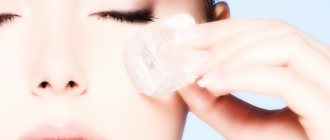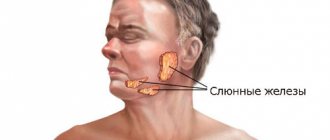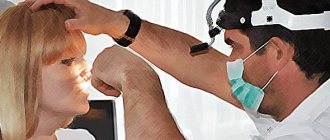Under normal conditions and in the absence of eye diseases lacrimation (tear fluid department) – this is a natural process.
It helps cleanse the tear ducts and conjunctiva, as well as remove foreign bodies (in such cases, lacrimation increases).
But in people of the older age group, such processes occur for no apparent reason , and such lacrimation lasts, if not constantly, then for long periods.
Principles of treating watery eyes in the elderly
It is important to remember that when the first manifestations of lacrimation occur, it is recommended to seek help from doctors who are able to determine whether it is a disease or a normal protective process. To do this, you will need to carry out diagnostic measures.
It happens that with a certain form of tearing of the eyes, the help of surgeons is prescribed; traditional medicine methods will not help.
But, when doctors, upon examination, discovered symptoms of the disease and prescribed drug treatment, the patient is able to recover by taking medications as advised by the specialist.
During an examination by an ophthalmologist, he is able to determine the nuances, including the causes, nature and complexity of the pathological process. Damage can be physical or bacterial, depending on this, a special approach is used in treatment.
To carry out a methodological selection of treatment for the secretion of tears is the task of doctors, since the causes are not the same. After studying the causes and potential consequences, doctors prescribe a course of action during treatment.
conclusions
It should be remembered that only an ophthalmologist can make a diagnosis of excessive lacrimation and prescribe the correct treatment. To prevent this problem from occurring, you need to take care of your eyes. For example, you should choose high-quality eye cosmetics and wear sunglasses.
The opposite of lacrimation is dacryocystitis, which is caused by blockage of the tear duct. Do not forget that any disease associated with vision, if not treated, leads to atrophy of the optic nerve, the treatment of which is much more difficult than the timely treatment of such simple diseases as lacrimation.
Causes of excessive lacrimation
If the cause of lacrimation is conjunctivitis, then therapy is aimed at suppressing the disease, but when lacrimation occurs due to some kind of inflammatory process in the body, then treatment becomes more complicated.
Causes of watery eyes in older people:
- During dry eye syndrome, tears are produced. This occurs due to the dryness of the surface of the eye, due to the fact that the body is trying to moisturize the surface.
- As age changes, the location of the opening for the removal of fluid (tears) changes. If the channels are blocked, this leads to inhibition of metabolism and the occurrence of an inflammatory process and excessive fluid secretion.
- The appearance of a pathological process in the respiratory tract and nasopharynx is accompanied by the release of tears.
- Diseases of the visual organs, such as keratitis, conjunctivitis and other pathological processes.
- Foreign body action.
- When wearing lenses for a long time, infection occurs.
- When choosing glasses incorrectly.
- Side effects in the form of tears can occur after medications, for example, during treatment for a disease such as arthritis.
- Watery eyes can occur after surgery.
There are other reasons, even in a situation where the body is overtired after reading books or working at the computer for a long time.
Symptoms
It is not difficult to determine increased tearfulness of the eyes - there is a constant burning sensation in them, a feeling of a foreign body. Because of this, tears are constantly produced in large quantities. This causes irritation of the eyelids and corners of the eyes, and erosions appear on the skin.
Due to increased tearing, a person has to constantly wipe his eyes. This increases the risk of microbial flora entering them. This is often accompanied by conjunctivitis, and styes form on the eyelids.
The constant flow of tears causes discomfort and decreased clarity of vision. Some experience dizziness, loss of coordination, and headache.
Drops for treating problems
What drops will help in the treatment of excessive lacrimation from the eyes? It happens that lacrimation appears at an unpredictable moment and when you have drops with you against the excessive secretion of tears, the problem disappears. Many people know the inconvenience that excessive tearing from one or both eyes can cause.
Lacrimation occurs after inflammation of the mucous membrane in the nose or an allergic effect. In this case, anti-tear drops will help.
By nature, the tear secretion system plays the role of moisturizing and protecting the conjunctival eye membrane. It happens that the eyes begin to tear excessively, this interferes with normal life.
Use of the specialized drug Spersallerg
Drops belong to the group of antiallergic drugs. They are used in the treatment of diseases of the eye apparatus and have been successfully used during increased lacrimation.
Used during hay fever, acute atopic conjunctivitis and intense tearing of the eyes. The composition contains a combination of two components - antazoline and thiazoline.
Drops are used to reduce lacrimation, irritation and swelling, burning in the eye area and itching on the surface of the ocular apparatus.
Features of using Sanorin Anolergin
If allergic processes occur with excessive secretion of tears, then Sanorin Anolergin will help get rid of troubles; it has proven itself in practice. The composition contains a combination of two components, such as: Antazoline and Naphazoline. The medicine can act on the source of inflammation.
https://medglaza.ru/zabolevaniya/bolezni/slezotechenie-pozhilyh-lyudej.html
Pharmacological groups of drugs for the treatment of eye diseases
If your eyes constantly water, then this phenomenon in ophthalmology is called “watery eye syndrome.” To treat this condition, medicinal drops belonging to various categories of drugs are prescribed. All of them are divided into several types.
Corticosteroids. Hormonal agents, indispensable in cases where severe inflammatory processes occur in the organs of vision. At the same time, corticosteroids have few side effects and contraindications. Such drops eliminate swelling, itching and normalize the secretion of tear fluid.
- Broad-spectrum antibiotics.
- Antihistamine drops that effectively relieve burning, redness, and lacrimation during allergic reactions.
- Vasodilator drops. These are combined remedies that eliminate swelling, tone the conjunctiva, relieve irritation and fatigue by constricting blood vessels and normalizing blood circulation.
If your eyes are watery, then only a qualified specialist can decide what drops to use. After diagnosis, he will determine the nature of lacrimation and only then will he prescribe effective medications. We will talk about the most popular drugs used in these situations.
Treatment with other drugs
In addition to eye drops, ointments are used; they also help by relieving swelling and allergic effects.
How are Floxal and Floxacin used?
Ofloxacin and Floxal (eye ointments) are used for bacterial infection of the ocular apparatus, including the conjunctiva and cornea. If barley, dacryocystitis, or chlamydial eye infections appear, the drug will help. Orfloxacin and Floxal help in the prevention of complications after surgery or removal of foreign bodies and injuries.
In what cases is Allergodil prescribed?
If symptoms of lacrimation in old age appear regularly, then this solution is not prohibited from being used throughout the year, observing certain intervals for breaks.
This drug is a kind of solution that is used in ophthalmic practice. Allergodil is not capable of causing addiction to the patient's body, for this reason it is often prescribed for seasonal treatment of allergies (during flowering plants or other forced contacts with allergens).
Will Prenacid help the elderly?
This is a hormonal drug, available in the form of drops. Used during lacrimation.
Long-term use of Prenacid is prohibited, as it causes an infectious disease. The drug is available with a doctor's prescription.
Treatment of the problem with Cromohexal
These are drops for the treatment of the eye apparatus, which are prescribed during intense tear production. The product can help patients cope with mechanical damage and allergies.
Diagnostics
For diagnosis, you need to consult an ophthalmologist who will help you find the cause of the problem. He must take into account all the accompanying symptoms in order to make a correct diagnosis. For example, if lacrimation is accompanied by pain in the nose, this may indicate dacryocystitis. After this, the doctor should perform an eye examination. To do this, he must use a slit lamp to examine the eyelids, the tone of their skin, the condition of the conjunctival membrane and cornea.
At the next stage, the specialist assesses the patency of the lacrimal canals. This is done using the color proof method. It consists of dropping a colored solution into the eyes and assessing the time of passage through the nasal cavity. Normally, the solution flows freely into the nasal cavity. If the doctor suspects stenosis (narrowing of the cavity), then he prescribes an x-ray diagnostic with a contrast agent, which makes it possible to determine the location of the stenosis.
If the ophthalmologist could not find an objective reason why the eyes water on the street, then he can diagnose eye strain and eye fatigue.
Features of treatment of discharge from one eye
The peculiarity of the treatment of lacrimation from one eye in elderly people depends on the course and nature of the pathogenic process:
- Surgical methods are used to treat blocked canals.
- Inflammation is treated with medications, antibiotics, solutions or special eye drops.
- Inflammation is treated using traditional methods of treatment. In this case, special herbal infusions are used.
It happens that lacrimation is a congenital factor. But, according to statistics, there are cases of acquired tearing. It is important to remember that infectious and inflammatory diseases are treated with antibacterial agents.
It is recommended not to use medications during the period of using traditional methods of treatment. If no therapy methods help, then specialists prescribe a surgical approach (surgery).
Manufacturers produce drugs that treat ophthalmic diseases. In order not to make a mistake when choosing, it will not be superfluous to study the actions of some drugs.
Surgical intervention
In advanced cases, in particular with significant anatomical destructive changes in the tissues of the eye, surgical intervention is necessary. Most often, surgery is prescribed in the presence of the following disorders:
- stenosis of the nasolacrimal duct;
- eversion of the lacrimal punctum;
- retention cyst of the lacrimal sac;
- formation of dacryolites;
- blockage of fluid outflow channels.
The type of surgery depends on the cause of the pathology.
Excessive lacrimation and its treatment
Drugs that are used when problems occur in old age with excessive tear production are eye drops. They act differently, depending on the characteristics of the body and the disease.
During lacrimation, which appears as a result of blepharitis or conjunctivitis, drops against inflammation are used in old age. It happens that medications contain antibiotics.
According to doctors, in old age it is necessary to use drugs such as: Indocollir, Tobradex, Okomistin, Diklo-F and others.
If lacrimation occurs, which appears with age-related changes (canal displacement or blockage), the use of medications will not work.
In treatment, massage, physiotherapy and other interventions are considered more effective in order to restore the daily way of life.
If surgical intervention is not prescribed for excessive lacrimation, then traditional medicine and its recipes will help with treatment.
Preventive actions
Prevention of the presented pathology is an important point, because it is better to prevent the onset of the disease in advance than to suffer later in search of effective therapy.
Preventive measures include fulfilling the following conditions:
- Often the cause of lacrimation is cosmetics applied to the very edge of the eyelid. To avoid irritation, you need to wash off your makeup before going to bed, and change it at least once every 3 months. You should not use other people’s eye care products and let others use your own. Such actions can be dangerous, since pathogenic bacteria can concentrate on various brushes.
- Water is an excellent source of habitat for various microorganisms. When visiting the pool, you should always use special glasses that fit tightly to your face and cover your eyes. The most common disease transmitted in water is conjunctivitis. It is enough to simply immerse yourself in a body of water and the infection will immediately spread to the mucous membrane of the eyes.
When none of the above methods gave the desired result, and you have caught some kind of infection, you need to immediately make an appointment with a specialist. He will prescribe the necessary medications and indicate in what dosage you should take them. With proper treatment, all symptoms of lacrimation should go away after a few days.
Help from folk remedies
How is lacrimation from the eyes treated with folk remedies? Brewing tea helps. Strong tea is brewed, and after it cools, appropriate washing is done - this is done a couple of times a day. This helps to quickly cope with disorders of the visual organ system.
The use of dill seeds has become famous for its effects on human health and vision. To prepare the composition, take one tablespoon of plant seeds and add cold water (0.5 l). The solution is placed on the fire and brought to a boil. After this, it is recommended to leave the mixture for 3-4 hours.
Use of the decoction: wash your face with the composition in the morning for 2 weeks. It is also recommended to make compresses in the form of tampons before going to bed.
The duration of use of ointments or drops is prescribed by a specialist. It is important to pay attention to the fact that if after the first use allergy symptoms appear, then stop using the product.
Why is excessive tearing dangerous?
In itself, increased tearing is not dangerous to health, but diseases that cause this symptom (conjunctivitis, blepharitis, keratitis) can lead to serious visual impairment. One of the most dangerous complications is the thinning of the eye film, when the surface of the eye is left without natural protection from the effects of negative factors.
Conjunctivitis
In addition, with increased production of tear secretion, a person constantly rubs his eyes, which increases the risk of damage and infection of the mucous membranes. This sign is especially dangerous for people suffering from diabetes - it may indicate the development of serious complications, often leading to complete blindness.
Other Possible Methods
If the cause of lacrimation was a lack of vitamins, then it is important to reconsider your diet. It is important to eat foods that contain vitamin A.
It happens that lacrimation occurs with suppuration. In this case, a solution of boric acid is prescribed.
And at night, make a compress with the same composition with a solution of boric acid.
If physiotherapeutic procedures are prescribed during treatment, then patients with eye diseases will more often be exposed to:
- electrophoresis;
- electroreflexotherapy;
- UHF therapy;
- magnetic therapy;
- electrical stimulation.
The procedures will help get rid of troubles by accelerating the restoration of the eye membrane. With physiotherapeutic procedures, home-based use of traditional medicine methods will be useful.
Self-medication for lacrimation in older people is impractical, since it will not be possible to make a diagnosis without delay. For this reason, treatment without diagnosis will be ineffective.
Anatomical changes
With age, muscles, skin and fatty tissue become flabby and sag, resulting in disruption of the lacrimal apparatus. Pathologies may have different development mechanisms, but their symptoms are similar, and one of them is increased tearfulness.
Table. Pathologies in which lacrimation is observed.
| Pathology | Mechanism and clinical features |
| Changing the position of the lacrimal papilla | Due to degenerative changes in the skin and mucous membranes, the ocular papilla becomes denser or lengthened and does not participate in the function of draining tear fluid |
| Changing the position of the lacrimal opening | A decrease in muscle tone leads to a phenomenon called senile blepharoptosis - the lower eyelid droops slightly and everts, as a result of which the lower lacrimal punctum moves slightly. This causes increased lacrimation, and a person, trying to wipe away tears, injures and retracts the eyelid, which aggravates the pathology |
| Changing the direction of eyelash growth | In old age, the eyeball sinks a little, the upper eyelid curls up, and the eyelashes begin to irritate the mucous membrane, causing constant tearing. In complex cases, this pathology leads to microtrauma of the mucous membrane, the development of conjunctivitis, keratitis and blepharitis - as a result, pain, pain and redness of the eye are added to the increased secretion of tears |
| Weakening of the tear duct muscles | With atony (weakening) of the muscles of the lacrimal ducts, the function of fluid secretion is impaired even in the absence of anatomical changes in the organs |
Eversion of the century
Attention: eyelid inversion can be not only a consequence of anatomical changes in tissues, but also a sign of malignant tumors localized in the area of the eyelid margin or near them.











